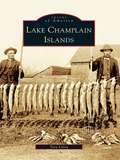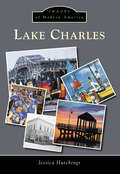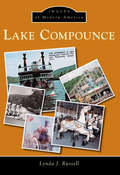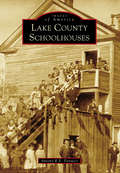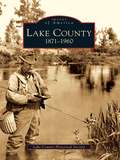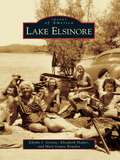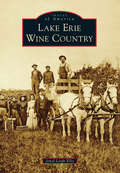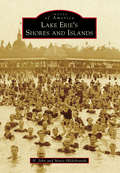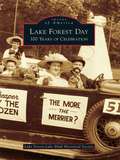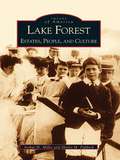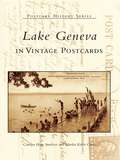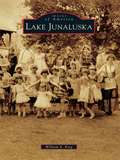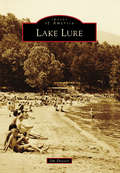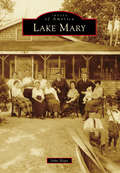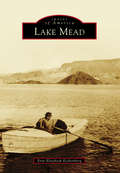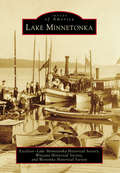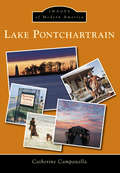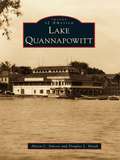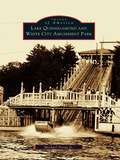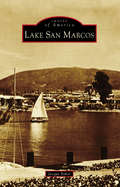- Table View
- List View
Lake Champlain Islands
by Tara LiloiaOn July 3, 1609, French explorer Samuel de Champlain and his group canoed south from Canada into an expansive lake and found four islands. Those islands are now the Lake Champlain Islands, and it was that trip that gave birth to Vermont and sparked 400 years of history. Located in the far northwest corner of the state, the islands are well known as a shoreline retreat for all of New England, with their small-town feel and picturesque farmlands. In this birthplace of Vermont, with its rich soil, early settlers found success growing local varieties of apples, which they shipped by steamboat directly to international cities. Several large deposits of unique, dark limestone brought marble trade to the area, and these materials are still mined in working quarries today. The Lake Champlain Islands are a tranquil, yet vibrant area of Vermont, where historical buildings are often used as schools, museums, libraries, and private homes.
Lake Charles
by Jessica HutchingsLake Charles experienced dramatic changes following World War II. During the 1950s and 1960s, the city's young petrochemical industry and the nation's rising consumer economy led to a surge of construction south and east of the city. As people moved to the suburbs, the urban core of Lake Charles suffered destruction and neglect. The turn of the 21st century brought expanded industries to Lake Charles, including gaming, tourism, and aviation maintenance. Amidst these changes, Lake Charles retains its unique southwest Louisiana flavor. The area hosts over 75 annual festivals celebrating a rich history. Residents and visitors enjoy outdoor recreation on the area's bayous, rivers, and lakes. Lake Charles is famous for its cuisine, which often features a bounty of regional seafood. The city's location on the Calcasieu River, the unique culture of southwest Louisiana, and the resilient and hospitable people help to make Lake Charles a jewel of the Gulf Coast.
Lake Compounce (Images of Modern America)
by Lynda J. RussellFounded in October 1846 by two local families, Lake Compounce began its transformation from a rustic summer resort into a bustling amusement park. Gad Norton and Isaac Pierce teamed together to build a park that utilized the lake's natural appeal forswimming, boating, and picnicking. Through vintage photographs, Lake Compounce highlights the park's long history of big bands, the Crocodile Club, the Wildcat roller coaster, and the William Gillette train. For generations, the park has been able to maintain its status as a local treasure while expanding and growing into what is today recognized as "America's pioneer playground."
Lake County Schoolhouses (Images of America)
by Antone R.E. PierucciThe quaint, one-room schoolhouse of the untamed frontier looms large in the collective image of the American West. The stories that surround these schoolhouses have become embedded in the nation's cultural memory: the hardships of having to walk miles to and from school, the often cramped quarters within, and the harsh lessons learned at the hand--or ruler--of the teacher. More often than not, these stories are told with a sense of nostalgia for the bygone era of rural education. This book explores the myths and realities of these iconic buildings in one rural county in California. Although this volume focuses on just a single region, the important role these schools played in the lives of those they served (or did not serve) speaks to the wider influence of schools and education throughout early California.
Lake County: 1871-1960
by Lake County Historical SocietyNative Americans roamed the beautiful lands of northern Michigan for many years, leaving a legacy of mature forests, clear waters, and plentiful game. By 1871, waves of immigrants were arriving from Europe, as well as Union soldiers after the Civil War. These pioneers brought with them the tools, know-how, and determination to transform the wild land into an economy based on the timber, railroads, and farming. Schools, churches, businesses, and tourism blossomed. The county's 156 lakes and 46 trout streams offered pristine settings for swimming, boating, hunting, and fishing. Resorts, sporting clubs, and cottage colonies sprang up to meet the needs of seasonal visitors. Early fishing guide and hotelier Andrew J. Bradford, financiers Curtis W. MacPhail and Robert J. Smith, philanthropist Martin Johnson, and others nurtured the growth of the communities. The Civilian Conservation Corps replanted the forests and built roads, the African American resort of Idlewild showcased black entertainers, and Raymond W. Overholzer built Shrine of the Pines, all promoting the county's development.
Lake Elsinore
by Elizabeth Hepler Edythe J. Greene Mary Louise RowdenAt the foot of the Ortega Mountains on the flank of Cleveland National Forest, the 3,300-acre Lake Elsinore is one of Southern California's more spectacular natural wonders. It is also the region's only large natural lake. The city of the same name on its shores was incorporated in 1888 through the efforts of financier Franklin H. Heald. His partner, D. M. Graham, fancifully wrote, "We can imagine no more enchanting picture than Elsinore will present when the tasteand energy of the settlers shall have made it a valley of fruit and flowers in the midst of which the lake shall lie like a priceless gem." Named after the castle in Shakespeare's Hamlet, the lake and city proved to be a stopover spot for hunters and ranchers, eventually vacationers, and then water and motor sports aficionados. Today Lake Elsinore has a thriving population of about 30,000 year-round residents in the southwestern corner of Riverside County.
Lake Erie Wine Country (Images of America)
by Jewel Leigh EllisIn 1818, Deacon Elijah Fay planted the first grape vines of the Lake Erie Wine Country, located in the Lake Erie Concord Grape Belt. Fay's relatives planted the premier Concord vineyards in Brocton, New York, where the mighty Concord grape thrived. Vineyards were planted along the shore of Lake Erie in both New York and Pennsylvania, attracting the likes of Dr. Charles Welch, who relocated his grape juice operations to Westfield, New York, in 1897. Regional wineries sprung up during the grape boom of the 19th century but went out of business due to Prohibition in 1919. While New York permitted commercial wineries after Prohibition, it was not until 1968 when wineries were allowed to reopen in Pennsylvania. Today, the Grape Belt spans almost 60 miles along the southern shore of Lake Erie. Quaint towns dot the Grape Belt, which is now home to the Grape Discovery Center and boutique wineries that welcome thousands of visitors each year.
Lake Erie's Shores and Islands
by Marie Hildebrandt H. John HildebrandtFor 150 years, people have come to rest, relax, and recharge in the area from Vermilion to Port Clinton, south to Milan, Bellevue, and Fremont, and north to Sandusky, Cedar Point, the Marblehead Peninsula, and the Lake Erie Islands. Lake Erie is the constant in this fascinating story, the natural resource that gives the region its character and charm. Quaint wineries, world-class roller coasters, amusement parks, water toboggans, indoor and outdoor water parks, lake steamers and jet boats, cottage communities, sportfishing, swimming, sailing, boating, camping, historical sites, caverns, museums, beaches, Civil War history, resort hotels, religious retreats, and natural wonders--Lake Erie's shores and islands have a rich tourism and recreation history.
Lake Forest Day: 100 Years of Celebration
by Lake Forest-Lake Bluff Historical SocietyThe first Lake Forest Day in 1908 included a hot air balloon ascension, a cutest baby contest, a mind-reading dog, and a vaudeville show. Proceeds from this event, organized by the Lake Forest Woman's Club, funded the Contagious Hospital, which eventually merged into Lake Forest Hospital. American Legion Post 264 took over in 1921 and has maintained this extraordinary tradition ever since. This annual celebration has changed over the years to reflect local interests, national events, and even cultural shifts. With the advent of World War II, the themes became patriotic, such as "Home Defense," "Prelude to Victory," and "On to Tokyo." Lake Forest Day, held on the first Wednesday of August, continues to inspire civic pride. This book represents a fascinating look at Lake Forest in 1908 and the century thereafter, as parades, carnivals, and contests energized community spirit.
Lake Forest: Estates, People, and Culture (Images of America)
by Shirley M. Paddock Arthur H. MillerLake Forest: Estates, People, and Culture is the first book-scaled historical survey entirely focused on this notable Chicago North Shore suburb in a generation, offering a newly visual approach to the community's unique early past. Many of the nearly 200 images have never been published, having been newly discovered in local archives and family collections. From the Civil War to World War I especially, this community of millionaires flourished, giving rise to a diverse whole town-within-a-town whose local industry comprised the estates and their owners. West Lake Forest had been settled by Irish-descendant farmers after 1836, but by 1857 a new sort of community had sprung up further east, between the then-new railroad line along the lake and the shore. It was a wooded, naturalistic, anti-urban suburb, centered on education and faith, established by New England descendant Chicago Presbyterians, and businessmen with their families.
Lake Geneva in Vintage Postcards (Postcard History Series)
by Carolyn Hope Smeltzer Martha Kiefer CuccoLake Geneva was originally called Kishwauketoe by the Oneota tribe, a name meaning clear or sparkling water. Carved out by a glacier, this same crystal water has attracted residents and tourists for centuries, and continues to be a retreat for many in every season. Through a collection of vivid vintage postcards, authors Carolyn Hope Smeltzer and Martha Kiefer Cucco provide an overview of Lake Geneva's rich history, rendered in views of mansions, cottages, and camps, and in images of recreation, the surrounding towns, and, of course, Lake Geneva itself.
Lake Jocassee (Images of America)
by Debbie FletcherThe creation of Lake Jocassee by Duke Power Company's massive Keowee-Toxaway Project in the late 1960s and early 1970s flooded a quaint mountain valley whose earliest recorded history was in 1539, when Spanish explorer Hernando de Soto led an expedition through the present-day Jocassee Gorges. In 1971, hundreds watched the slow retreat of the Whitewater, Thompson, Horsepasture, Toxaway, and Keowee Rivers as they formed one large lake, smothering homes, lands, and farms in the process. Years of monitoring the water flow through the valley proved initial estimates correct, and Lake Jocassee became the deepwater source it was intended to be, providing an adequate supply of water to generate electricity. Today, a new generation enjoys many recreational activities on what is known as the "Jewel in South Carolina's Crown," a pristine lake surrounded by the Blue Ridge Mountains in Oconee and Pickens Counties.
Lake Junaluska
by William E. KingReligion spread swiftly across our new nation with the help of camp meetings where families, taking a break from farm labor, gathered for inspiration and socializing. The late-19th-century religious experience expanded the concept by adding educational and recreational opportunities. Permanent campgrounds appeared, the most renowned being Chautauqua in New York. In 1913, Southern Methodists created their own institution with the first conference at Lake Junaluska in western North Carolina. Capitalizing on the beauty of the Appalachian Mountains, Lake Junaluska Assembly, a conference center of the United Methodist Church, became an attraction for inspiration, instruction, relaxation, and recreation. Renowned preachers such as Billy Graham and speakers like Eleanor Roosevelt have filled its iconic round auditorium. Approximately 200,000 annual visitors join a residential community to make Lake Junaluska a destination in its own right amid the attractions of nearby Asheville, Waynesville, Blue Ridge Parkway, and Great Smoky Mountains National Park.
Lake Lure
by Jim ProctorLake Lure, North Carolina, is known as the "Gem of the Carolinas." Twenty-five years after Dr. Lucius Morse and his brothers Hiram and Asahil purchased Chimney Rock in 1902, their dream of creating Lake Lure and the town of Lake Lure was realized. Lake Lure is surrounded by majestic mountain cliffs and fed by the idyllic Rocky Broad River. A popular tourist destination, Lake Lure hosted famous figures through the years, including Franklin D. Roosevelt and F. Scott Fitzgerald. Also significant in film history, it provided the backdrop for Dirty Dancing and Last of the Mohicans. Lake Lure showcases the rich community, tourism, and recreational history of this mountain community.
Lake Mary
by John HopeFrom the start, Lake Mary was quiet and friendly, with a quality of life that attracted people of various backgrounds and origins wanting a break from hectic city life. The founding families described their initial experience as "heaven," with men on horseback clomping over dirt roads, dogs running free, ospreys perched in silence, and the echoes of children playing nearby. Underneath the cool shade of Florida oaks and swaying palmettos, women rocked and knitted while men gathered on benches and told valiant stories of catching fish. Since its inception, the Lake Mary City Commission has embraced the so-called "total quality of life," providing homes and work opportunities in close proximity to reduce daily commutes and solidify the sense of community. This led the way to Money magazine naming Lake Mary in 1997 the fourth best place to live and work in the United States.
Lake Mead
by Erin Elizabeth EichenbergThe drastic contrast between its desert landscape and the deep, blue waters of Lake Mead makes it difficult to envision the park's creation as merely incidental. After the completion of the Hoover Dam, the waters of the Colorado River began to flood the river valley and form one of the largest man-made lakes in the United States. The Bureau of Reclamation soon realized the vast recreational opportunities that Lake Mead would provide. Through a memorandum of agreement, the National Park Service was tasked with managing the first national recreation area, formerly known as the Boulder Dam National Recreation Area.
Lake Minnetonka
by Excelsior-Lake Minnetonka Historical Society Westonka Historical Society Wayzata Historical SocietyKnown to native peoples for centuries as a sacred place and hunting ground, the ninth largest of Minnesota's 10,000 lakes remained unchanged until its shores were opened to settlement in 1851. The following year, New York promoter George Bertram wrote, "For healthfulness of climate, fertility of soil, beauty of scenery and nearness to markets [it] cannot be surpassed by any other locality in the country, being within twelve or fifteen miles of two of the most important towns in the territory . . . navigable for steam and other boats over forty-one miles, its waters clear as crystal and abounding with fish." Settlers began to flock to Lake Minnetonka's 120 miles of shoreline, clearing the "Big Woods" and building new lives in the wilderness. Soon, the lake became a tourist destination; thousands traveled across the country to stay in its lavish hotels, ride in massive steamboats, and enjoy the lake's beauty.
Lake Oswego
by Laura O. FosterFifteen thousand years ago, the Missoula floods roared out of the Columbia River Gorge and sculpted a lakebed out of an old river channel. In 1847, Albert Durham built a home and mill at the lake's outlet, calling the area Oswego. In the 1860s, iron ore mined from the surrounding hills gave rise to the hope that Oswego would become the "Pittsburgh of the West." Two decades after its hillsides had been logged and the iron industry failed, the city reinvented itself as an elegant streetcar suburb of Portland, a place where people could live where they played. Oswego Lake's shores were soon lined with picturesque homes, and pleasure boats and water-skiers roamed its waters. Arcadia's Images of America: Lake Oswego chronicles the town's bucolic beginnings, industrial heyday, and successful repurposing from a community based on resource extraction to one of Oregon's most beautiful towns, renamed Lake Oswego after a 1960 merger with nearby Lake Grove.
Lake Pontchartrain
by Catherine CampanellaNative Americans used Okwata, meaning "wide water," as a shortcut for inland trade between the Gulf of Mexico and the Mississippi River. When the Europeans arrived, the original inhabitants showed them the route--the settlement near the river became the city of New Orleans, other lakeshore communities grew, and Lake Pontchartrain continued to be a vital waterway well into the 20th century. Aside from its economic value, Lake Pontchartrain was a cultural mecca: Mark Twain wrote about it and jazz sprang from its shores; locals and visitors traveled out to the amusement parks and opera pavilions, simple fishing villages and swanky yacht clubs, forts and lighthouses; and majestic hotels and camps perched precariously over the water. In Images of America: Lake Pontchartrain, photographs document memories of a time that not even Hurricane Katrina could erase.
Lake Pontchartrain (Images of America)
by Catherine CampanellaIn Images of America: Lake Pontchartrain, photographs document memories of a time that not even Hurricane Katrina could erase.Native Americans used Okwata, meaning "wide water," as a shortcut for inland trade between the Gulf of Mexico and the Mississippi River. When the Europeans arrived, the original inhabitants showed them the route--the settlement near the river became the city of New Orleans, other lakeshore communities grew, and Lake Pontchartrain continued to be a vital waterway well into the 20th century. Aside from its economic value, Lake Pontchartrain was a cultural mecca: Mark Twain wrote about it and jazz sprang from its shores; locals and visitors traveled out to the amusement parks and opera pavilions, simple fishing villages and swanky yacht clubs, forts and lighthouses; and majestic hotels and camps perched precariously over the water.
Lake Quannapowitt
by Alison C. Simcox Douglas L. HeathLake Quannapowitt is named for James Quonopohit, a member of the Pawtucket tribe of Nipmuc Indians and signer of the 1686 deed selling land to European colonists. A town called Redding (now Wakefield) developed on the shore of the lake that provided colonists with a bounty of fish, including salmon and alewives, until mills stopped their passage upstream. The town remained rural until the Boston and Maine Railroad arrived in 1845. Overnight, new markets became accessible, and Lake Quannapowitt ice was exported to destinations worldwide. Icehouses dominated the shoreline and stood side-by-side with boathouses and bathhouses. Some in Wakefield remember the last days of ice harvesting, although barely a trace of its existence remains. More residents remember Hill's Boathouse and Dance Hall, where many a romance began. For recent arrivals who walk and jog its idyllic 5-kilometer shore, the lake's industrial and complex past will come as a surprise.
Lake Quinsigamond and White City Amusement Park (Images of America)
by Michael Perna Jr.In the 1800s and well into the 1900s, the area around Lake Quinsigamond, in Shrewsbury and Worcester, was one huge summer resort. Hotels, ethnic and social clubs, boat clubs, a horse racing track, picnic grounds, and two amusement parks, Lincoln Park and White City Park, lined the shore. Steamboats and smaller steam launches transported tourists to the area. Canoes, rowboats, sailboats, and motorboats crowded the lake on weekends. Crew boat regattas, which started in the 1850s, continue to this day. Lake Quinsigamond and White City Amusement Park lets readers experience the attractions, such as the shoot the chutes and White City roller coaster, and enjoy the fun atmosphere during those long-ago summers.
Lake Ronkonkoma
by Dale Spencer Janet RischbieterThe town of Lake Ronkonkoma began as a small farming community. By the 1870s, the lake's reputation as a vacation destination was spreading among wealthy New York City residents. The completion of the Long Island Motor Parkway in 1911 made the lake accessible to early automobile enthusiasts, and over time, as more could afford automobiles, the rich and poor alike flocked to its sparkling shores for swimming, boating, and fishing. In 1921, local businessman George C. Raynor created Raynor's Beach, the first in the lake's era of grand beach pavilions. By the mid-1920s, beach pavilions were located all around Lake Ronkonkoma's three miles of shoreline. Lake Ronkonkoma provides a view into the rich history of this unique community and its transformation to a bustling summer resort.
Lake San Marcos
by Jacque BakerIn 1962, the Frazar brothers purchased 1,648 acres of land, which included a 40-acre lake, in San Diego's North County with the goal of building a lakeside community of homes and two golf courses. By 1964, the lake was enlarged to 80 acres and the land was reshaped to accommodate 1,500 homes (eventually growing to over 2,500 homes); two golf courses, one a private country club and the other a public course; and a bridge across the lake. A motel, restaurant, shopping center, and residents' recreation center were later added. In 1967, the National Home Builders Association Convention in Chicago awarded the Lake San Marcos design the title of "Best Planned Lakeside Community in the Nation."
Lake Shore Electric Railway
by Dennis Lamont Albert Doane Thomas J. PattonThe Lake Shore Electric Railway commenced operation in 1893 on the north coast of Ohio, providing transportation to Cleveland, Lorain, Sandusky, Toledo, and on to Detroit, Michigan. The Lake Shore Electric Railway connected with many other electric railroads to offer a comprehensive quilt of transportation. This allowed increased commerce, ease of transportation, and access for the industrial-era family to visit such recreation spots as Linwood, Crystal Beach, Avon Beach Park, Mitiwanga, Rye Beach, Ruggles Grove and Beach, and Cedar Point, among others. An unimaginable feat in the late 1800s, the Lake Shore Electric could travel from Lorain to Cleveland (approximately 30 miles) in under one hour, making the railway a huge success. Unfortunately this success only lasted about 40 years.
